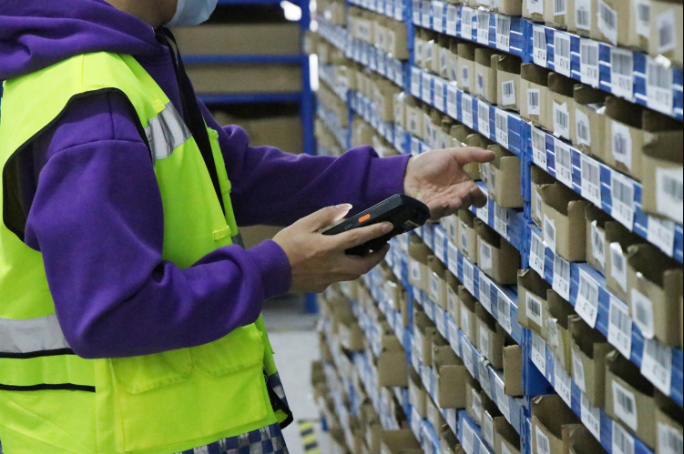Table of Contents
Get Custom eCommerce Fulfillment Service
Book a Meeting
What Is Inventory Visibility & Why It’s Crucial for eCommerce
Time: Aug 20,2025 Author: SFC Source: www.sendfromchina.com
inventory visibility isn’t just a technical term—it’s a strategic game-changer. At its heart, inventory visibility empowers businesses to track the real-time location, quantity, and status of products across every stage of the supply chain—from warehouse racks to in-transit customs clearance to the final mile of delivery.
Consider how traditional tracking tools like RFID or GPS have paved the way, but often fall short when stretched across borders, systems, and stakeholders. That’s why modern visibility solutions—including AI-driven control towers and integrated dashboards—are redefining how businesses react to delays, supply chain disruptions, and demand swings.
In this article, we’ll walk you through:
- A crystal-clear definition of inventory visibility and its role in modern logistics.
- Why robust visibility is a cornerstone of eCommerce success and operational resilience.
- How SendFromChina leverages cutting-edge visibility tools to give brands clarity, agility, and control in a complex market.
Let’s get started.
1. What Is Inventory Visibility
Imagine having eyes on every single item in your supply chain, from warehouse to end-customer. That’s what inventory visibility is all about: the ability to see, in real time or near-real time, how much stock you have, where each SKU resides, and what its status is—whether it resides in a shelf, is in transit, or awaits allocation.In practical terms, inventory visibility answers two simple, critical questions:
- What do we have?
- Where is it?
But—and this is key—it doesn’t stop there. It also encompasses knowing which items are allocated for imminent orders, which are back-ordered, and which are still at rest. This level of insight is the backbone for smarter decisions—from replenishment timing to channel allocation.
2. Why Inventory Visibility Matters for eCommerce
In today’s eCommerce world, customers expect accuracy like never before. They want to know instantly whether an item is available, where it ships from, and when it arrives.
- Prevent stockouts or excess inventory.
- Fulfill omni-channel orders seamlessly.
- Forecast demand with better precision.
- Optimize where and when to pick, pack, and ship.
Moreover, the broader supply chain—and logistics as a whole—is increasingly fragile. Disruptions from natural events, cyber incidents, or geopolitical shifts mean that real-time visibility is no longer optional—it’s essential to keep operations running smoothly.
3. Benefits of Inventory Visibility
Inventory visibility is a cornerstone of modern supply chain and eCommerce operations. By providing real-time insights into stock levels, locations, and movements, businesses can achieve greater efficiency, reduce costs, and enhance customer satisfaction. Below are the key benefits:
Enhanced Demand Forecasting and Inventory Planning
Accurate inventory visibility enables businesses to analyze historical data and current trends, leading to more precise demand forecasting. The foresight allows for better inventory planning, ensuring that stock levels align with actual demand, thereby reducing the risk of overstocking or stockouts. According to SAP, real-time inventory data streamlines operations and reduces excess inventory, leading to cost savings and improved efficiency.Improved Customer Satisfaction
With real-time access to inventory data, businesses can provide accurate product availability information to customers, leading to more reliable delivery times and fewer backorders. The transparency builds trust and enhances the overall customer experience. Retailers with real-time inventory visibility can deliver true omnichannel customer experiences, which are essential for closing deals and building customer loyalty.Streamlined Order Fulfillment
Inventory visibility allows for efficient order processing by providing up-to-date information on stock levels across various locations. The capability enables businesses to allocate inventory optimally, reducing lead times and improving order accuracy. For instance, retailers can fulfill orders from the nearest warehouse, expediting delivery and reducing shipping costs. Companies that prioritize inventory visibility have seen a 2-3% increase in profit margins and a 6-8% reduction in stockouts.Cost Reduction and Operational Efficiency
By minimizing overstocking and stockouts, businesses can reduce storage costs and avoid lost sales. Inventory visibility also helps in identifying slow-moving items, allowing for timely promotions or discounts to clear excess stock. The proactive approach leads to better cash flow management and optimized resource allocation. According to Supply Chain Dive, companies with real-time inventory visibility experience benefits such as increased customer satisfaction, optimized inventory management, faster fulfillment times, and cost reductions.Enhanced Risk Management and Supply Chain Resilience
Comprehensive inventory visibility provides a holistic view of the supply chain, enabling businesses to identify potential risks and disruptions. The insight allows for proactive measures, such as adjusting procurement strategies or diversifying suppliers, to mitigate risks and enhance supply chain resilience. End-to-end visibility enables businesses to track and monitor activities at every stage of the supply chain, supporting strategic planning and risk management by providing insights into performance and status.4. How to Optimize Inventory Visibility
Achieving optimal inventory visibility requires a strategic approach that integrates technology, processes, and collaboration across the supply chain. Below are key strategies to enhance inventory visibility:
Implement Real-Time Tracking Technologies
Adopting technologies such as barcode scanning, RFID, and GPS tracking enables businesses to monitor inventory movements in real time. These tools provide accurate data on stock levels, locations, and conditions, reducing manual errors and improving decision-making. For instance, RFID technology allows for automated inventory updates, enhancing accuracy and efficiency.Integrate Advanced Inventory Management Systems
Utilizing cloud-based inventory management systems offers centralized control over inventory data. These systems provide comprehensive dashboards that offer insights into stock levels, trends, and performance metrics, facilitating informed decision-making and proactive management.Foster Collaboration with Suppliers and Partners
Building strong relationships with suppliers and logistics partners enhances data sharing and coordination. Collaborative platforms and Electronic Data Interchange (EDI) systems facilitate seamless communication, reducing lead times and improving delivery reliability.Leverage Predictive Analytics and AI
Implementing predictive analytics and AI tools enables businesses to forecast demand more accurately and anticipate potential disruptions. These technologies analyze historical data and external factors to optimize inventory levels and improve responsiveness.Adopt Omnichannel Order Management Systems
Integrating omnichannel order management systems ensures consistent inventory data across all sales channels. These systems synchronize inventory information, providing a unified view that enhances customer experience and operational efficiency.Implement Automated Replenishment and Order Placement
Automating replenishment processes helps maintain optimal inventory levels by triggering orders based on predefined thresholds. This reduces the risk of stockouts and overstocking, ensuring a balanced inventory.5. Core Elements of Effective Inventory Visibility
Achieving effective inventory visibility requires a strategic approach that integrates technology, processes, and collaboration across the supply chain. Below are the key elements that contribute to enhanced inventory visibility:
Real-Time Data Collection and Integration
Utilizing technologies such as RFID, barcode scanning, and GPS tracking enables businesses to capture accurate, real-time data on inventory movements. Integrating this data into centralized systems ensures that all stakeholders have access to up-to-date information, facilitating informed decision-making and proactive management. For instance, RFID technology allows for automated inventory updates, enhancing accuracy and efficiency.Centralized Inventory Management Systems
Implementing centralized inventory management systems (IMS) or warehouse management systems (WMS) provides a unified platform for tracking inventory across all locations and sales channels. The centralization reduces data silos and ensures consistency, enabling businesses to manage inventory more effectively and respond swiftly to changes in demand.Standardized Data Formats and Protocols
Adopting standardized data formats and communication protocols facilitates seamless data exchange between systems and partners. Standardization reduces errors, enhances interoperability, and ensures that all parties interpret inventory data consistently, leading to improved coordination and efficiency across the supply chain.Predictive Analytics and Demand Forecasting
Leveraging predictive analytics and demand forecasting tools enables businesses to anticipate future inventory needs based on historical data and market trends. These insights allow for proactive inventory planning, reducing the risk of stockouts and overstock situations, and ensuring that inventory levels align with actual demand.Automated Replenishment and Order Management
Implementing automated replenishment and order management systems helps maintain optimal inventory levels by triggering orders based on predefined thresholds and real-time data. Automation streamlines processes, reduces manual errors, and ensures timely restocking, leading to improved inventory turnover and reduced carrying costs.Collaboration and Communication Across the Supply Chain
Fostering collaboration and communication among all stakeholders, including suppliers, manufacturers, and logistics partners, enhances inventory visibility. Shared access to inventory data and transparent communication channels enable coordinated efforts, quicker response times, and better alignment of supply and demand.6. Challenges in Achieving Inventory Visibility
Achieving comprehensive inventory visibility is a complex endeavor that many businesses face due to various internal and external challenges. Understanding these obstacles is crucial for developing effective strategies to overcome them.
Data Silos Across Systems
Many organizations operate with disparate systems for inventory management, sales, procurement, and logistics. These systems often do not communicate with each other, leading to data silos. Without seamless data integration, obtaining a unified view of inventory across the supply chain becomes difficult, resulting in discrepancies and inefficiencies. According to Schneider, data silos impede the free flow of logistics, operations, and inventory data needed for complete visibility.Lack of Real-Time Data Synchronization
Inaccurate or outdated inventory data can lead to stockouts or overstocking. Without real-time synchronization, businesses may make decisions based on incorrect information, affecting customer satisfaction and operational efficiency. Omniful highlights that real-time inventory tracking allows businesses to maintain accurate and current stock-level information across all locations, preventing costly issues like stockouts and overstocking.Manual Processes and Human Errors
Relying on manual processes such as spreadsheets or paper records increases the likelihood of human errors in inventory tracking. These inaccuracies can lead to phantom inventory—stock that appears available in the system but isn't physically present—resulting in fulfillment issues and customer dissatisfaction. NetSuite emphasizes that manual cycle counts and tracking in an age of barcodes and automated cycle counts are needlessly inefficient.Limited Visibility in Multi-Location Warehouses
For businesses operating multiple warehouses, maintaining consistent inventory visibility across all locations is challenging. Disparate systems and processes can lead to stock imbalances, where one location may be overstocked while another faces shortages. Omniful notes that implementing centralized inventory management solutions that provide real-time tracking across all warehouses is vital for efficient supply chain visibility.Poor Integration Across Multiple Sales Channels
Managing inventory across various sales channels—such as online stores, marketplaces, and physical retail locations—can be challenging without proper integration. Lack of synchronization between these channels can lead to inconsistent stock information, causing issues like overselling or underselling. Omniful emphasizes the importance of implementing comprehensive inventory management solutions that unify data across all sales platforms for accurate inventory visibility.Limited Supplier Communication
Effective inventory visibility requires collaboration with suppliers and logistics partners. Limited communication and data sharing can result in delays, inaccuracies, and missed opportunities. Schneider suggests that implementing a common communication platform, establishing clear protocols, and sharing all relevant data with suppliers are crucial to overcoming this challenge.Technological Barriers
Not all companies within the supply chain may have the technology to track inventory in real time. This lack of technological capability can hinder efforts to achieve comprehensive inventory visibility. NetStock points out that technology barriers exist when companies along the supply chain lack the necessary tools to track inventory in real time.Complex Supply Chains
Globalization and multi-tier supply chains make it difficult to get a clear picture of inventories and their locations. The complexity increases as businesses expand their operations across borders and manage multiple suppliers, manufacturers, and logistics providers. NetStock highlights that complex supply chains pose significant challenges to achieving inventory visibility.7. How SendFromChina Can Enhance Inventory Visibility
SendFromChina (SFC) stands out as a comprehensive third-party logistics (3PL) provider, offering a suite of advanced tools and services designed to provide unparalleled inventory visibility for e-commerce businesses. By leveraging SFC's solutions, businesses can achieve real-time tracking, streamline operations, and enhance decision-making processes.Centralized visibility platform: aggregate inventory data from multiple Chinese warehouses, transit, and client systems into one dashboard that refreshes in real time.
Advanced tagging & tracking: implement barcodes, RFID, or IoT to monitor items at unit level throughout their journey.
Seamless integrations: connect client storefronts (eCommerce platforms), OMS/WMS, customs data, and logistics partners into your visibility toolkit.
AI-powered forecasting & alerts: use demand signals and shipment data to auto-predict replenishment need, flag delays, and guide routing decisions.
Control-tower oversight: deliver proactive visibility of inventory and transit statuses, optimized for global cross-border logistics.
Tailored dashboards & notifications: send automated alerts when stock dips below thresholds or shipments deviate, enabling quick, confident decisions.
Cost-efficient access to tech: many smaller brands can’t afford full automation; SendFromChina offers that ecosystem without steep upfront burden, making visibility accessible.
8. Conclusion
Inventory visibility isn’t just a ‘nice-to-have.’ It’s the linchpin of modern eCommerce and logistics: preventing stockouts, optimizing forecasts, enhancing customer trust, and building resilient supply ecosystems.But achieving it means navigating integration hurdles, data quality, and organizational silos. That’s where SendFromChina—with its technological infrastructure, integration capabilities, and 3PL specialization—can transform visibility from aspiration into daily reality for brands.
9. FAQs
Q1: What exactly does “inventory visibility” mean?
A: It means knowing in real time what items you have, where they are, and their status across your network.Q2: Why does it matter for eCommerce?
A: It helps avoid stockouts and overstocks, enables faster fulfillment, and enhances customer satisfaction.Q3: What are common hurdles in achieving visibility?
A: Disconnected systems, manual inventory tracking, data silos, and limited supplier transparency.Q4: How can SendFromChina help?
A: By providing integrated tracking, smart tagging, AI-driven alerts, and unified dashboards tailored for cross-border logistics.Q5: Is full end-to-end visibility realistic today?
A: It’s a journey—many companies still lack visibility beyond their direct suppliers—but strong tooling and integration, like SendFromChina offers, make significant strides possible. Post Views:1001
Post Views:1001
Copyright statement: The copyright of this article belongs to the original author. Please indicate the source for reprinting.
Previous Post
What Is an Inventory Management System? A Complete Guide for eCommerce & 3PL
Next Post
TAGS
Hot Research
Recent News
Get Custom eCommerce Fulfillment Service
Book a Meeting
Get a Custom China Fulfillment Solution with FREE Storage for 30 Days
 Want to know about our services, fees or receive a custom quote?
Want to know about our services, fees or receive a custom quote?
 Please fill out the form on the right and we will get back to you within a business day.
Please fill out the form on the right and we will get back to you within a business day.
 The more information you provide, the better our initial response
will be.
The more information you provide, the better our initial response
will be.





 TAGS:
TAGS: